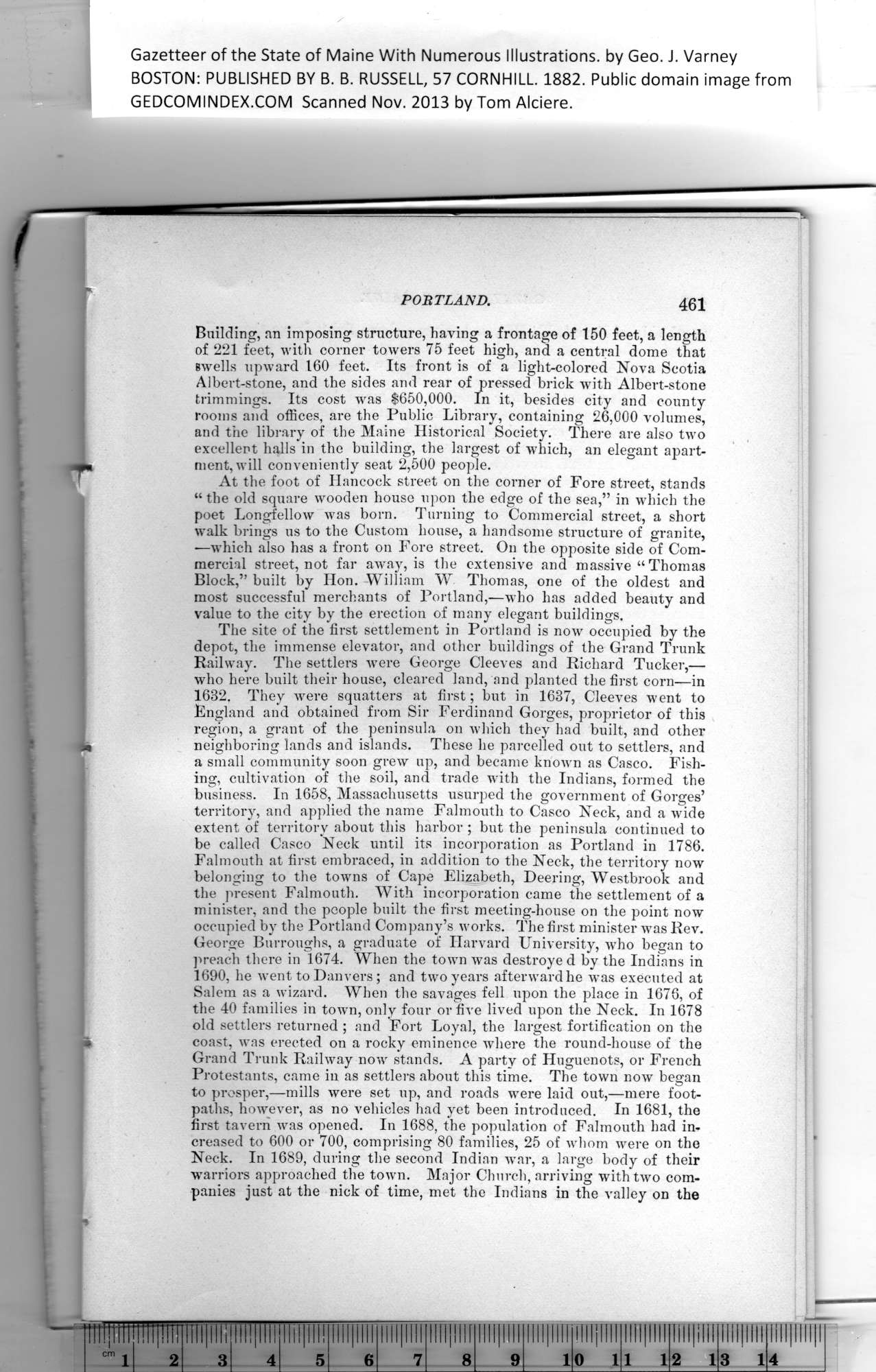|
PORTLAND. 461
Building, an imposing structure, having a frontage of 150 feet, a length
of 221 feet, with corner towers 75 feet high, and a central dome that
swells upward 160 feet. Its front is of a light-colored Nova Scotia
Albert-stone, and the sides and rear of pressed brick with Albert-stone
trimmings. Its cost was $650,000. In it, besides city and county
rooms and offices, are the Public Library, containing 26,000 volumes,
and the library of the Maine Historical Society. There are also two
excellent halls in the building, the largest of which, an elegant apart-
ment, will conveniently seat 2,500 people.
At the foot of Hancock street on the corner of Fore street, stands
“ the old square wooden house upon the edge of the sea,” in which the
poet Longfellow was born. Turning to Commercial street, a short
walk brings us to the Custom house, a handsome structure of granite,
—which also has a front on Fore street. On the opposite side of Com-
mercial street, not far aw'ay, is the extensive and massive “ Thomas
Block,” built by Hon. William W Thomas, one of the oldest and
most successful merchants of Portland,—who has added beauty and
value to the city by the erection of many elegant buildings.
The site of the first settlement in Portland is now occupied by the
depot, the immense elevator, and other buildings of the Grand Trunk
Railway. The settlers were George Cleeves and Richard Tucker,—
who here built their house, cleared land, and planted the first corn—in
1632. They were squatters at first; but in 1637, Cleeves went to
England and obtained from Sir Ferdinand Gorges, proprietor of this
region, a grant of the peninsula on which they had built, and other
neighboring lands and islands. These he parcelled out to settlers, and
a small community soon grew up, and became known as Casco. Fish-
ing, cultivation of the soil, and trade with the Indians, formed the
business. In 1658, Massachusetts usurped the government of Gorges’
territory, and applied the name Falmouth to Casco Neck, and a wide
extent of territory about this harbor ; but the peninsula continued to
be called Casco Neck until its incorporation as Portland in 1786.
Falmouth at first embraced, in addition to the Neck, the territory now
belonging to the towns of Cape Elizabeth, Deering, Westbrook and
the present Falmouth. With incorporation came the settlement of a
minister, and the people built the first meeting-house on the point now
occupied by the Portland Company’s works. The first minister was Rev.
George Burroughs, a graduate of Harvard University, who began to
preach there in 1674. When the town was destroye d by the Indians in
1690, he went to Danvers ; and two years afterward he was executed at
Salem as a wizard. When the savages fell upon the place in 1676, of
the 40 families in town, only four or five lived upon the Neck. In 1678
old settlers returned ; and. Fort Loyal, the largest fortification on the
coast, was erected on a rocky eminence where the round-house of the
Grand Trunk Railway now stands. A party of Huguenots, or French
Protestants, came in as settlers about this time. The town now began
to prosper,—mills were set up, and roads were laid out,—mere foot-
paths, however, as no vehicles had yet been introduced. In 1681, the
first tavern was opened. In 1688, the population of Falmouth had in-
creased to 600 or 700, comprising 80 families, 25 of whom were on the
Neck. In 1689, during the second Indian Avar, a large body of their
warriors approached the town. Major Church, arriving with two com-
panies just at the nick of time, met the Indians in the valley on the
PREVIOUS PAGE ... NEXT PAGE
This page was written in HTML using a program written in Python 3.2
|
